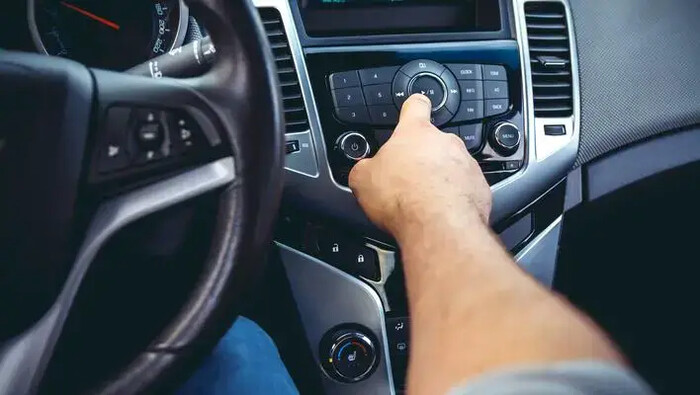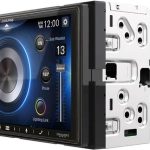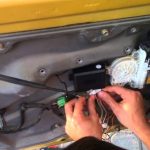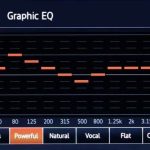Picture this: cruising down the open road, your favorite tunes blasting from your car stereo, creating a soundtrack for your journey. But lately, something seems off—car stereo not as loud as it used to be. As a fellow car stereo enthusiast, I understand the frustration that comes with a seemingly muted sound system. In this guide, we’ll delve into the common reasons behind a quieter car stereo and explore practical solutions to crank up the volume once again.
A car stereo isn’t just a luxury; it’s a vital component that enhances the driving experience. Whether you’re a music aficionado, podcast enthusiast, or simply enjoy the clarity of hands-free phone calls, a robust car audio system is key. When that volume starts to dwindle, it’s time to investigate the root causes.
Common Causes of Decreased Volume
A. Speaker Issues
- Speaker Damage or Wear: Over time, speakers can wear out or suffer damage, affecting their ability to produce clear and loud sound. Check for visible signs of wear, tears, or distortion in the speaker cones.
- Loose or Disconnected Wires: Inspect the wiring connecting your speakers to the head unit or amplifier. Loose or disconnected wires can disrupt the signal flow, resulting in diminished audio output.
B. Head Unit Problems
- Malfunctioning Volume Control: The volume control on your head unit might be malfunctioning. Turn it up and down several times to see if the volume changes accordingly. If not, it may need repair or replacement.
- Settings and Equalizer Adjustments: Incorrect settings or adjustments to the equalizer settings can lead to reduced volume. Ensure that the settings match your preferences and the audio source.
C. Amplifier Troubles
- Overheating: Amplifiers can overheat, especially during extended use. Check for proper ventilation and consider investing in additional cooling solutions like fans or heat sinks.
- Power Supply Issues: Inspect the power supply to the amplifier. Voltage drops or irregularities can impact the amplifier’s performance and, consequently, the volume output.
Environmental Factors
A. Interior Cabin Acoustics
- Sound Reflection and Absorption: The interior of your car can impact the way sound travels. Consider adding acoustic materials to reduce sound reflection and absorb unwanted noise.
- Insulation and Sound Deadening: Insulate your car’s interior to minimize external noise intrusion and enhance the overall audio experience.
B. External Noise Interference
- Radio Frequency Interference (RFI): RFI from electronic devices or nearby radio towers can interfere with your car stereo signal. Identify and eliminate sources of RFI for clearer audio.
- Electrical Interference from Other Devices: Other electronic devices in your car can contribute to electrical interference. Keep devices away from audio cables to minimize disruptions.
Vehicle-Specific Considerations
A. Car Make and Model
- Factory Stereo Limitations: Some factory-installed car stereos may have limitations. Explore upgrade options or consider external amplifiers to enhance the audio output.
- Upgrading Possibilities: Investigate aftermarket speakers, head units, or amplifiers for a significant boost in audio quality.
B. Battery Health
- Voltage Issues: A weakened car battery can result in insufficient power for your audio system. Ensure your battery is in good condition and providing the required voltage.
- Alternator Problems: A failing alternator can impact the overall electrical system of your car, affecting the performance of your stereo. Check the alternator’s health and replace if necessary.
Solutions and Troubleshooting Tips
A. DIY Speaker Inspection and Replacement
Inspect each speaker for visible damage, wear, or loose connections. Replace damaged speakers with high-quality replacements for improved sound.
B. Head Unit Adjustments and Resets
Check and adjust the volume controls, settings, and equalizer on your head unit. Perform a factory reset if needed to eliminate any software glitches affecting the audio output.
C. Amplifier Maintenance and Cooling
Ensure proper ventilation for the amplifier and clean any dust or debris that may be blocking airflow. Consider installing additional cooling solutions if overheating persists.
D. Improving Interior Acoustics
Add acoustic materials and sound deadening products to reduce unwanted noise and improve the overall acoustics within the car.
E. Addressing External Noise Sources
Identify and eliminate sources of external noise interference, such as RFI from electronic devices. Keep audio cables away from other electronic components to minimize interference.
F. Considering Car-Specific Upgrades
Explore aftermarket upgrades for your specific car make and model, such as high-quality speakers, head units, or amplifiers, to enhance the audio experience.
Conclusion
In conclusion, a quieter car stereo can result from various factors, ranging from speaker issues to external interference. By systematically troubleshooting and addressing these issues, you can restore your car audio system to its full potential.
Don’t let a decrease in volume dampen your driving experience. With the right troubleshooting steps and a bit of DIY spirit, you can enjoy a powerful and immersive car audio experience once again.
If troubleshooting on your own doesn’t yield results, don’t hesitate to seek professional assistance. Certified car audio technicians can diagnose complex issues and provide solutions tailored to your specific setup.








